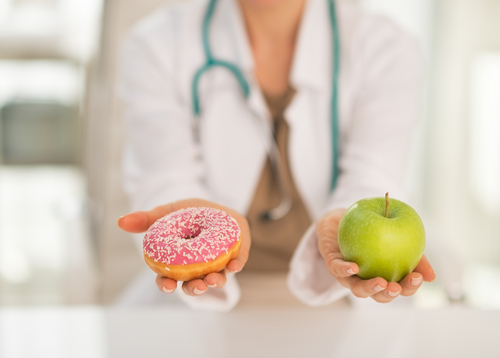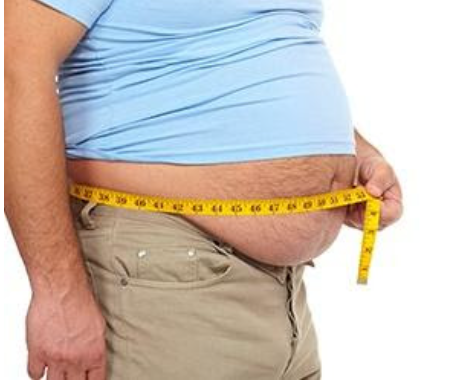Most people hear the word “diet” and they roll their eyes and let out a long sigh that suggests they don’t take diets too seriously. The thing is, if a weight-loss diet isn’t taken seriously and fails, there can be effects that occur over a long period of time. But if a diabetic diet isn’t taken seriously and fails, there can be immediate and life-threatening consequences.
While the goal of a weight loss diet is to, obviously, lose weight… the goal of a diabetic diet is to bring very high post-meal blood sugars down into a normal range. Diabetic diets are NOT about cutting calories. You can eat as much as you want as long as you eat foods that will not raise your blood sugar. The lovely bonus is that people usually do lose some weight on a diabetic diet. This is because high blood sugars cause insulin resistance and this is what causes us to gain weight.
The Diabetes Diet and Carbohydrates
Much research has gone into the effects of the foods we eat on our blood sugar. It is not eating fats or proteins that raises blood sugar but consuming carbohydrates, specifically simple carbs. When you cut back on the amount of carbs you eat and eat only healthy carbs, like the ones that come from certain fruits and vegetables, instead of the ones from processed junk food, your blood sugars come down and remain stable.
Consistently high blood sugars can lead to serious health complications such as heart and blood vessel disease, nerve and kidney damage and even blindness. If you have diabetes, it’s critically important that you take your diet very seriously.
How Much Carbohydrates are in Your Food?
It goes without saying that to be successful with a diabetic diet you’ve got to know how many carbs you’re actually consuming. The good news is once you’ve learned how a sample of foods with known amounts of carbohydrates affect you, you won’t have to test dozens of foods.
Sorry, but if you didn’t do it before you’re going to have to start reading those food labels so you know exactly how many grams of carbohydrates are in the different foods you eat. You may also use online calculators like the one found on Fitday.com or My Fitness Pal – these will also work on your smart phone. These apps will compute the amount of carbohydrates in each one of your meals as long as you know the portion size.
A Couple of Tips to Remember
- It’s a big challenge for diabetics to eat out at restaurants with family and friends. Most dining establishments don’t offer the nutritional values of their foods, and the ones that do aren’t necessarily being honest. Your best bet is to, of course, completely avoid the starchy and sugary foods on the menu. But you’re human and sometimes you just want to nibble on what your loved one is having. Your next best option is to eat only a small portion of the questionable food and then test your blood sugar an hour or two after to see how that particular restaurant food affected you.
- Foods that contain a lot of fat take longer to digest than those without a lot of fat. This is why you may have noticed that your favorite foods like ice cream and pizza have given you deceptively good readings on your blood glucose monitor. When you test a food and the reading is too good to be true, try testing again after 3 or 4 hours to get an accurate indication.
Foods You SHOULD Eat
With all of this talk of foods and how they affect blood sugar, we wanted to give you a few ideas of foods that are good for you and foods that you should avoid. Let’s start with the healthy food options:
Nonstarchy Vegetables
Nonstarchy veggies such as green beans, spinach and broccoli are high in fiber and low in carbohydrates, which make them an ideal choice for people with diabetes. Starchy veggies such as potatoes, corn, peas and lima beans, while offering other beneficial nutrients, have the propensity to raise blood sugar and should be eaten in moderation.
Strawberries
God bless the strawberry! It’s very sweet and delicious, so you can reach for them when craving a cookie or candy bar, yet they don’t raise blood sugar all that much because they are quite low in carbohydrates. Even more good news, because strawberries are high in fiber and water, you’ll feel fuller longer, even after eating just one cup. The longer you feel full, the fewer carbohydrates you are likely to consume.
Cinnamon
It’s pretty amazing when something so delicious and versatile like cinnamon can have insulin-like effects and help reduce blood sugar levels. A German study found that participants who consumed a cinnamon extract three times a day lowered their fasting blood sugar levels by 10.3%. Though more studies will need to be done before Western doctors will begin recommending cinnamon to their diabetic patients, you can begin now by adding cinnamon to your morning oatmeal or yogurt.
Foods to AVOID with Diabetes
White Rice
A study conducted in 2012 found that the more white rice a person eats, the more their risk of developing type 2 diabetes. In the study, of more than 350,000 people who participated, those who ate the most white rice had the greatest risk for type 2 diabetes. That risk increased 11% for each additional daily serving of rice. That’s a fairly significant increase. If you want to eat rice, switch to brown or wild rice, whole grains that don’t cause sugar spikes.
Chinese Food
And speaking of white rice, it’s not the only thing on the menu at the Chinese restaurant that will wreak havoc on a diabetic. Many items are fried and are served in a sugary sauce like orange chicken and the many sweet and sour dishes. If you are having a hankering for Chinese food, try preparing a modified dish at home using steamed veggies and low-sodium and low-sugar condiments. And it goes without saying, skip the white rice and go with brown.
Breakfast Pastries
Foods to avoid at all costs are things like donuts and sticky rolls if you want to keep your blood sugar under control. I just heard a collective groan. Look, I’m not saying the foods you should avoid aren’t delicious, I’m saying if you’re serious about remaining healthy you should avoid eating these foods that are high in carbohydrates and that will spike your blood sugars and cause serious diabetic complications.
You can find alternatives like eating whole-grain English muffins topped with low-sugar jam that are better for you and, once your taste buds get used to the difference, will become a delicious alternative.
 Validating...
Validating... 





Leave a Reply